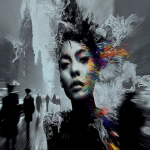Explore the Best AI Image Gallery

Capturing Reality: How AI is Transforming Product Photography
Product photography has long been a cornerstone of e-commerce and marketing. However, the rise of artificial intelligence (AI) is poised to revolutionize this field, bringing with it a wave of exciting possibilities and challenges.
The Power of AI in Product Photography
AI algorithms are now capable of automating various aspects of product photography, from image capture and editing to generating realistic 3D models. This opens up a plethora of benefits for businesses and consumers alike:
- Enhanced Efficiency: AI can automate time-consuming tasks like background removal, object detection, and color correction, freeing up photographers to focus on more creative aspects.
- Cost Savings: By reducing the need for manual labor and studio setups, AI can significantly lower production costs.
- Improved Product Presentation: AI-powered tools can enhance product images by adjusting lighting, color balance, and perspective, resulting in more visually appealing and realistic presentations.
- Personalized Experiences: AI can generate customized product images based on user preferences, such as different angles, backgrounds, or even virtual try-on experiences.
Applications of AI in Product Photography
The applications of AI in product photography are diverse and constantly evolving:
- Image Generation: AI algorithms can create realistic product images from scratch, eliminating the need for physical photography altogether.
- 3D Model Creation: By analyzing 2D images, AI can generate 3D models of products, enabling virtual try-ons and interactive visualizations.
- Virtual Styling: AI-powered tools can suggest outfit combinations and accessories based on user preferences and product availability.
- Dynamic Product Displays: AI can create interactive product displays that adapt to user interactions and provide real-time information about products.
Ethical Considerations
While the benefits of AI in product photography are undeniable, its crucial to consider the ethical implications:
- Transparency: Consumers should be informed when AI is used to create or manipulate product images.
- Bias and Fairness: AI algorithms can perpetuate existing biases if trained on biased datasets. Its essential to ensure fairness and inclusivity in AI-generated content.
- Job Displacement: Automation through AI may lead to job losses in the photography industry. Reskilling and upskilling programs will be crucial to address this challenge.
Future Trends
The future of AI in product photography is bright, with ongoing advancements poised to further transform the field:
- Hyper-Personalization: AI will enable even more personalized product experiences, tailoring images and presentations to individual consumer preferences.
- Augmented Reality Integration: AI-powered AR applications will allow consumers to virtually try on products and visualize them in their own environments.
- Generative Design: AI will assist in designing new products based on market trends and consumer feedback, optimizing aesthetics and functionality.
As AI technology continues to evolve, its impact on product photography will be profound. Embracing these advancements while addressing ethical considerations will be crucial for businesses and individuals alike to thrive in this rapidly changing landscape.



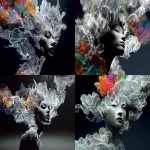

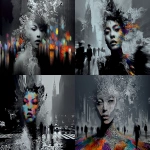
](https://images.ai-img.art/thumbnails/150/a3ed6513a6661aa3ee46e0c2924d1e8888854e91d8908de39db5590dc41f8d8f.webp)










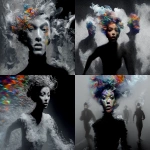



](https://images.ai-img.art/thumbnails/150/7cf5a08238f29c821f52bb4f63db48af0b7f633ff3b9f7253074d78ced9ff6f6.webp)










](https://images.ai-img.art/thumbnails/150/bd056a4718c27444e064198762f8dc8ffa1f74f1afd7dcda8d5cb8b142797d6e.webp)
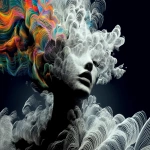

](https://images.ai-img.art/thumbnails/150/ff09e32d2be011c0dd785984c5c1e47839ce551a31da1bde242860b30df2aa30.webp)

](https://images.ai-img.art/thumbnails/150/2ebdeb4f7db35100e5be5de9bc3e533a40d14e5feedefd7ffc586524a0f3ba8c.webp)


](https://images.ai-img.art/thumbnails/150/0ba0be922ab76af53f75ab90126ae2b18a600ee3b96941e8ab897a9f10594e5a.webp)
](https://images.ai-img.art/thumbnails/150/847809c77ca9a73b68bc190e6efb06fec87157685a243730d5a66a403b0e6e10.webp)

](https://images.ai-img.art/thumbnails/150/685ae68cfab93a7e59a71206867b060c45bd6fd3cd561c4fe60fca514b09c5f8.webp)





